
This is a review of insulation options to find the best skoolie insulation options.
Our goal was to create a one-stop guide for you to compare the best insulation for school bus conversions (plus some not so wise choices) for your skoolie floor, walls, and ceiling based on performance, cost, and other not-so-obvious factors.
We searched through the home, car, RV, and some alternative insulation options. From common insulation like fiberglass to things like wool and denim, we reviewed 8 different insulation options for skoolies!
So, let’s dive in.
What is the Best Skoolie Insulation?
The best skoolie insulation is subjective since there are many types of insulation and ways to insulate a skoolie depending on how and where you will be using the skoolie.
Most would agree if cost was not a factor, the single best skoolie insulation for ceiling and walls from an overall benefit and ease of installation is spray foam insulation. The best skoolie floor insulation is a foam sheet insulation, either extruded polystyrene (XPS) or polyisocyanurate (PIR, ISO, or Polyiso), cut and placed within framing in the floor as spray foam is the best for walls and ceiling but sort of a waste of money for the floor. To get maximum benefits, using a combination of spray foam and foam sheet in the floors, walls, and ceiling could provide additional benefits.
However, different types of insulation may achieve the benefits you might be looking for at a lower cost. There are also different preparation needs or items needed for different types of insulation, including:
- Vapor Barriers: Some types of insulation act as a vapor barrier in a skoolie, while others need a separate vapor barrier installed.
- Thermal Bridging: School buses are notorius for thermal bridging and some insulation types are better than others at reducing or eliminating thermal bridging in a skoolie.
- Ventilation: Some skoolie insulation types cause a long list of issues when married up with a school bus conversion’s notorious issue of having ceiling condensation, from water pooling to health issues due to mold growth.
All of these factors should be considered when making your choice of skoolie insulation and we’ll dive more into all of this throughout this article.
We took it upon ourselves to do some digging through all the various types of insulation you could use, including home, car, RV, and even aviation insulation.
In the rest of this article, we’ll go through each type insulation for skoolie floor, walls, and ceiling. We’ll also go through some installation tips we picked up along the way.
Special Note: This article does have affiliate links. If you click a link and happen to make a purchase, we may receive a small commission at no cost to you. Thanks for your support – this commission helps us to continue educating the skoolie community!
Spray Foam Insulation
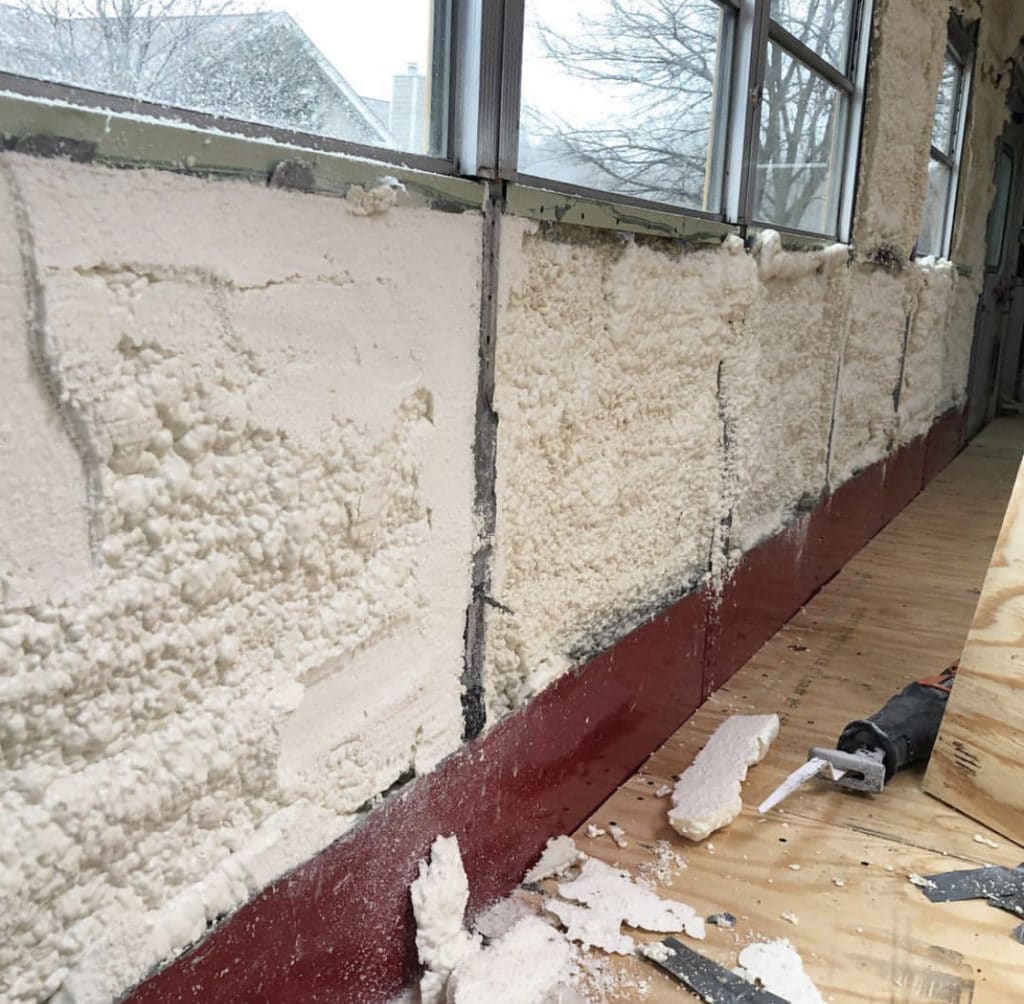
Spray foam is the go-to insulation for school bus conversions. This is because of the many benefits that come with spray foam insulation a bus conversion needs.
What most new skoolie owners do not know is how bad a skoolie can sweat.
The bus itself is metal (unless you do a shuttle bus conversion or something). When you have varying temperatures between the inside and outside of the bus, the bus will naturally start condensing moisture. This tends to happen mostly in winter.
Spray foam insulation dries into a hard foam with a solid, shiny coating that makes it nearly impossible for water to absorb into foam, mold to grow, and moist air to pass through it. For this reason, it is a natural moisture barrier and helps with sealing gaps in the walls.
The list of benefits and potential cons are below for skoolie spray foam insulation.
We used spray foam insulation in the walls and ceiling of our entire skoolie for the main reason above. We wrote up this guide to skoolie spray foam insulation that contains costs, a how to install, and a one year review after surviving an entire Wisconsin winter in our skoolie easily because of this insulation!
The Good
- Highest R-value at 6.5 per inch
- Extra vapor barrier not needed
- Resists mold
- Helps seal joints in walls
- Easy (and fun) to install
The Not So Good
- Cost
- Cleanup needed if you overfill/spray
Polyisocyanurate Foam Board
Polyiso foam board insulation is the best skoolie subfloor insulation, even better than the pink sheet we used. However, it is a little more expensive than pink sheet.
The difference is an R5 to R6 comparing pink sheet to polyiso with the foil backing.
The polyiso subfloor insulation helps keep the radiant cold from passing through to your skoolie flooring inside the bus, depending on your subfloor structure. It costs less than spray foam and you will have a subfloor frame, so it is overall easier to cut and insert foam board into your subfloor than it is to spray.
The Good
- High R-value at 6 per inch
- Works as a vapor barrier if installed correctly
- Resists mold
- Easy to install
The Not So Good
- Depending on your subfloor thickness, it may not stop all radiant cold in very cold climates.
Extruded Polystyrene XPS Pink Sheet
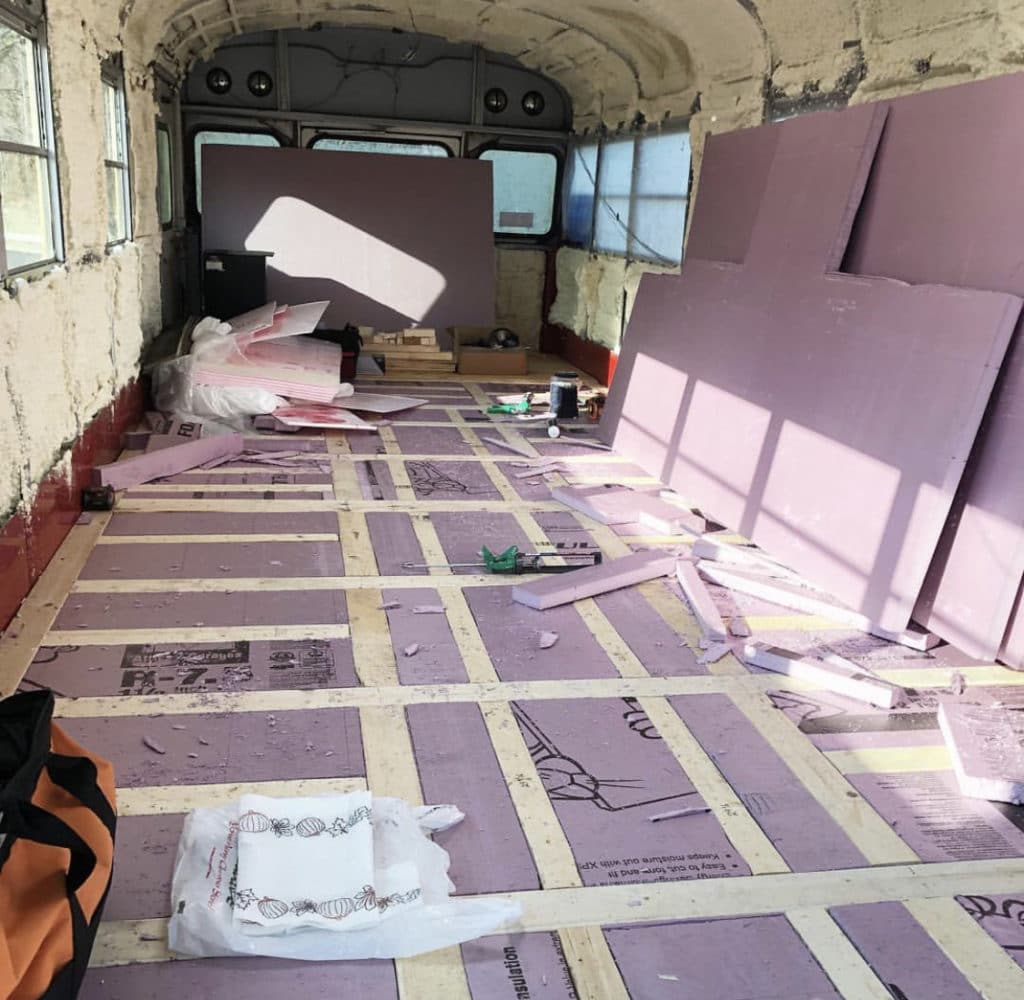
We decided to use extruded polystyrene (XPS) pink sheet for our skoolie subfloor insulation. This was to save a little money by not going to the polyiso because we went with the more expensive spray foam insulation in our skoolie walls and ceiling.
Again, the difference between this pink sheet to polyiso with the foil backing is minimal, a difference of R1, which we made up with black R1 fiberboard as the base layer of our skoolie subfloor.
Pink sheet is fairly cheap and easy to cut down to size to install.
The Good
- R-value of 5 per inch
- Works as a vapor barrier if installed correctly
- Resists mold
- Easy to install
The Not So Good
- Depending on your subfloor thickness, it may not stop all radiant cold in very cold climates.
Denim Skoolie Insulation
The first time I heard a DIY skoolie builder on Instagram talking about how they used denim for skoolie insulation, I honestly thought they had cut up old pairs of their jeans and started packing it in.
“Skoolie denim insulation? That’s odd.” I thought.
Turns out skoolie denim insulation is a popular option by those looking to use recycled materials.
Obviously, at the time I also didn’t know that Home Depot has denim insulation.
The cool part is if you are going for a more sustainable build trying to use recycled or upcycled materials, Home Depot’s denim insulation is 100% recycled denim!
The Good
- R-value of 4.2 per inch
- Relatively cheap option
- Non-itch material
- Semi-easy to install
The Not So Good
- A vapor barrier is needed.
- Not as good of an insulator as other materials.
Sheep Wool Skoolie Insulation
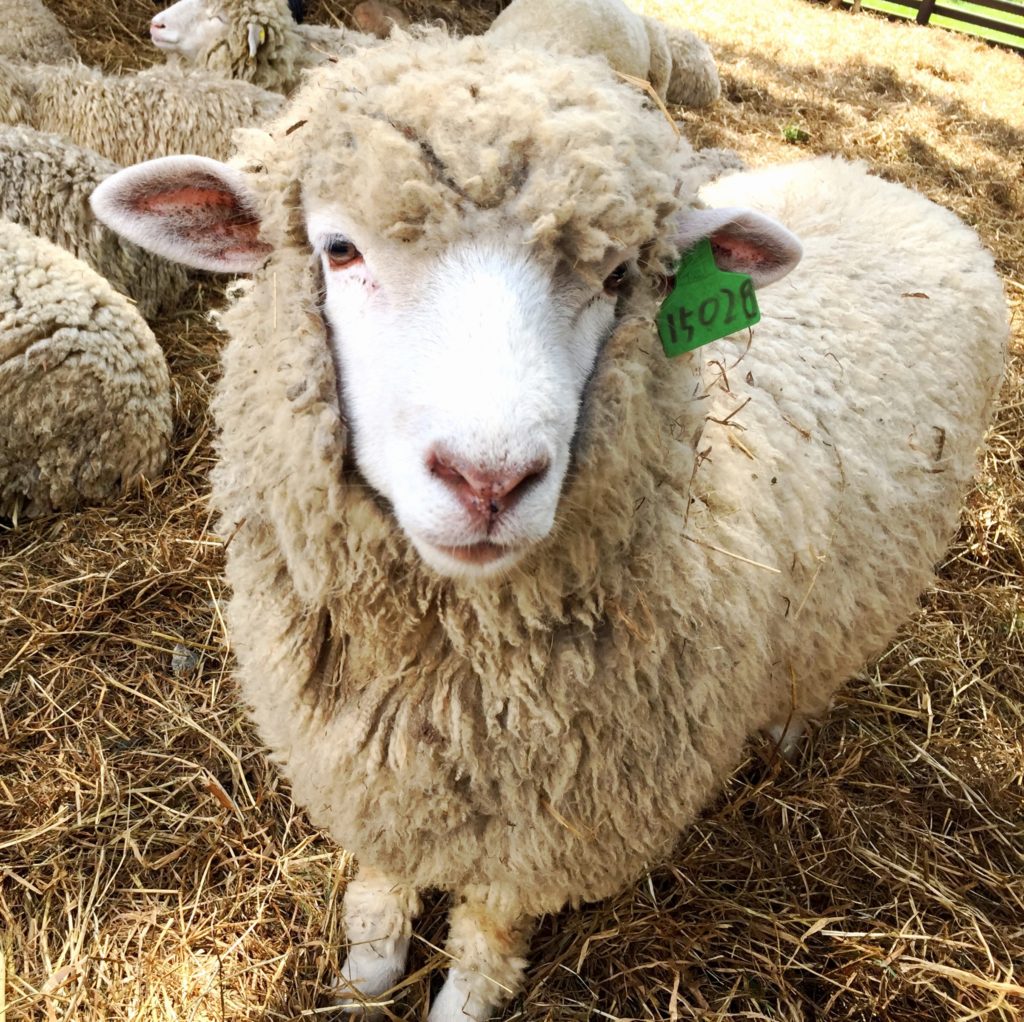
Sheep wool skoolie insulation is another unique option that I did not know was an option when we did our skoolie build.
No, people aren’t stealing their grandmother’s wool sweaters, shredding them up, and sticking them into the walls of their skoolie. This also isn’t a readily available option at home improvement stores, either.
Finally, it is a more expensive option compared to denim or other insulations on the list, with a slightly lower R-value.
So, you might be wondering, why is it not last on the list? Well, it comes with a host of other benefits, as you can see in the list below!
The Good
- Renewable & Sustainable
- Passive air filtration (highly reduced mold and mildew potential)
- Sound absorbing
- Very easy installation
- Negative carbon footprint (green solution!)
The Not So Good
- Higher Cost
- Lower R-Value at 3.5 per inch
- Need to Order Online
Classic Fiberglass Insulation
It would not be an insulation list if we didn’t put in classic fiberglass insulation for a skoolie.
This is the most common insulation since it is widely used in homes, garages, sheds, and other “normal” homes and buildings. Fiberglass insulation has a lower R-value of 3.7 per inch, but it is fairly cheap.
This is definitely a budget option, but it might also be the messiest and annoying insulation type on the list.
Skoolies are a tight space and installing this fiberglass insulation into the small walls under the windows or trying to get this fiberglass ceiling insulation in a skoolie to stay in place would be a nightmare. Small, microscopic fiberglass bits everywhere!
The only reason fiberglass insulation ranks higher than two other skoolie insulation options on the list is because we went a little outside the norm with our research. If it weren’t for the next two being more expensive and lower-performing, fiberglass insulation would definitely be the lowest on the list just because I hate how bad this stuff makes me itch!
The Goods
- Cheap, budget option
- Available at any home improvement store
The Not So Good
- Lower R-Value at 3.7 per inch
- Annoying to work with
Ceramic Fiber Insulation
I’ll be honest, this is an odd one.
Ceramic fiber insulation is the type of insulation used on furnaces, flue pipes, ovens, and other extreme temperature areas.
This insulation has an R-value of 5, which makes it one of the highest-performing insulation types on the list. However, it comes at an extremely expensive cost. Much higher than spray foam insulation. Unless you can get your hands on ceramic fiber insulation for really cheap or free, this is definitely not a wise skoolie insulation choice.
The Good
- R-value of 5 per inch
- Non-combustible under extreme temperatures
The Not So Good
- Absurdly expensive
- Does not come in large volumes
Car Insulation Mat
The last item on the list is definitely not the best option for insulating a skoolie entirely, but it does have a purpose in a skoolie build!
If you have a front-engine skoolie, you most likely will feel the front area of the bus get really hot from the engine. Especially on days where the weather is above 80°F. That’s where this car insulation thermal mat comes in.
This stuff is perfect for insulating underneath the dashboard area to break the thermal transfer of heat and stop it from turning the front area of the bus into a furnace. (We know from not having this thermal mat installed under the dash area on our first skoolie road trip when the weather reached 87°F. My leg felt like it was literally burning!)
Highly recommended for around your engine inside the cab of your skoolie! If you have a rear-engine skoolie and the back of the skoolie gets really hot, wrap the engine compartment inside the bus with this stuff, too!
The Good
- Thin and flexible to form to curved areas
- Perfect for reflecting thermal heat
- Low cost
The Not So Good
- Low R-value of 1
- Not ideal for insulating an entire school bus
*This article may contain affiliate links, which means we may receive a commission if you click a link and purchase something we have recommended. Please check our full disclosure policy for more details. Thanks for checking out our website and for your support!
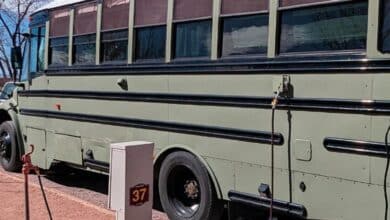
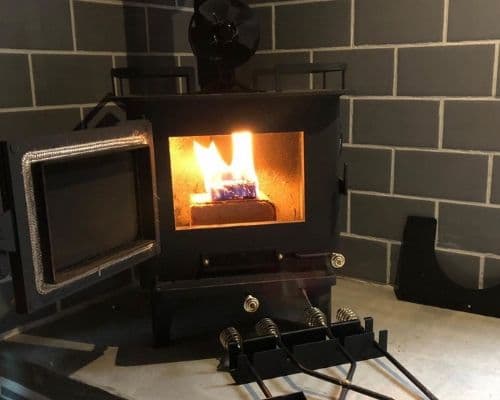
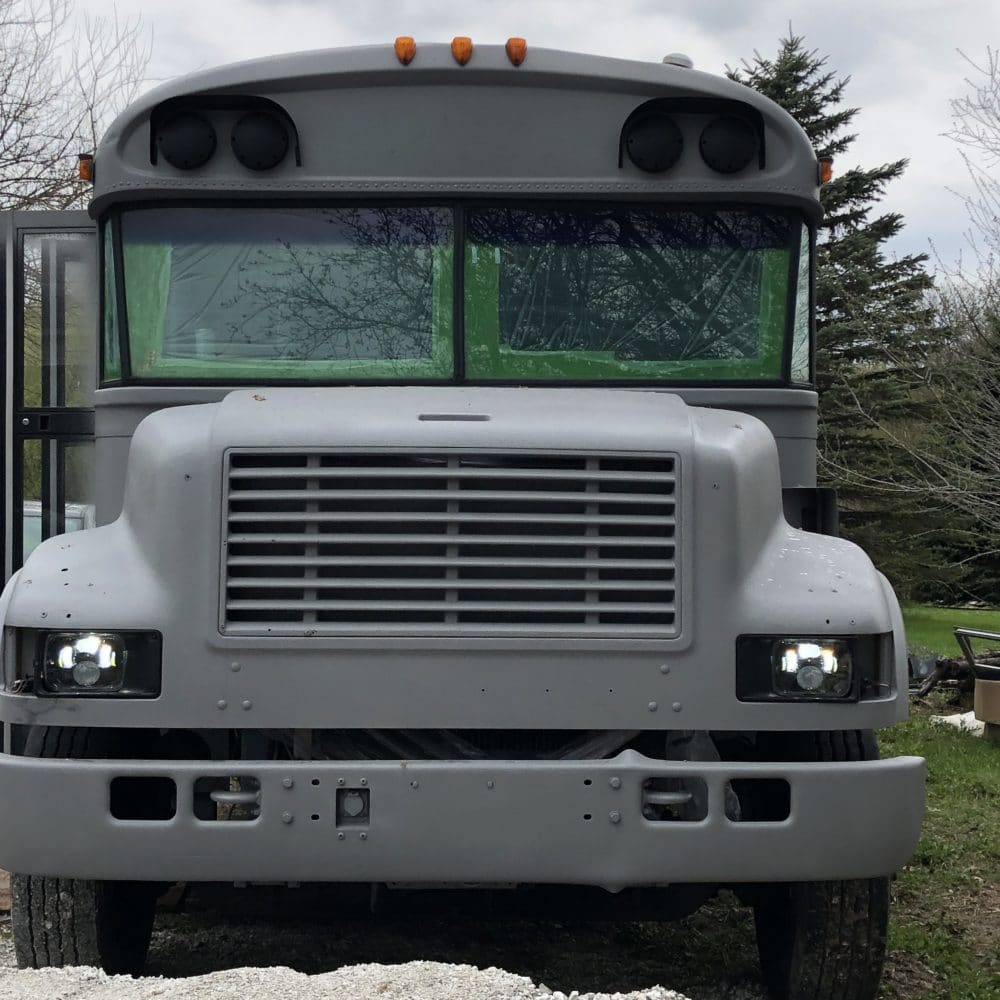
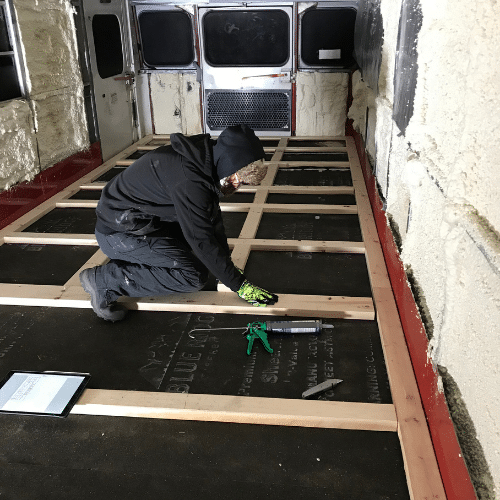
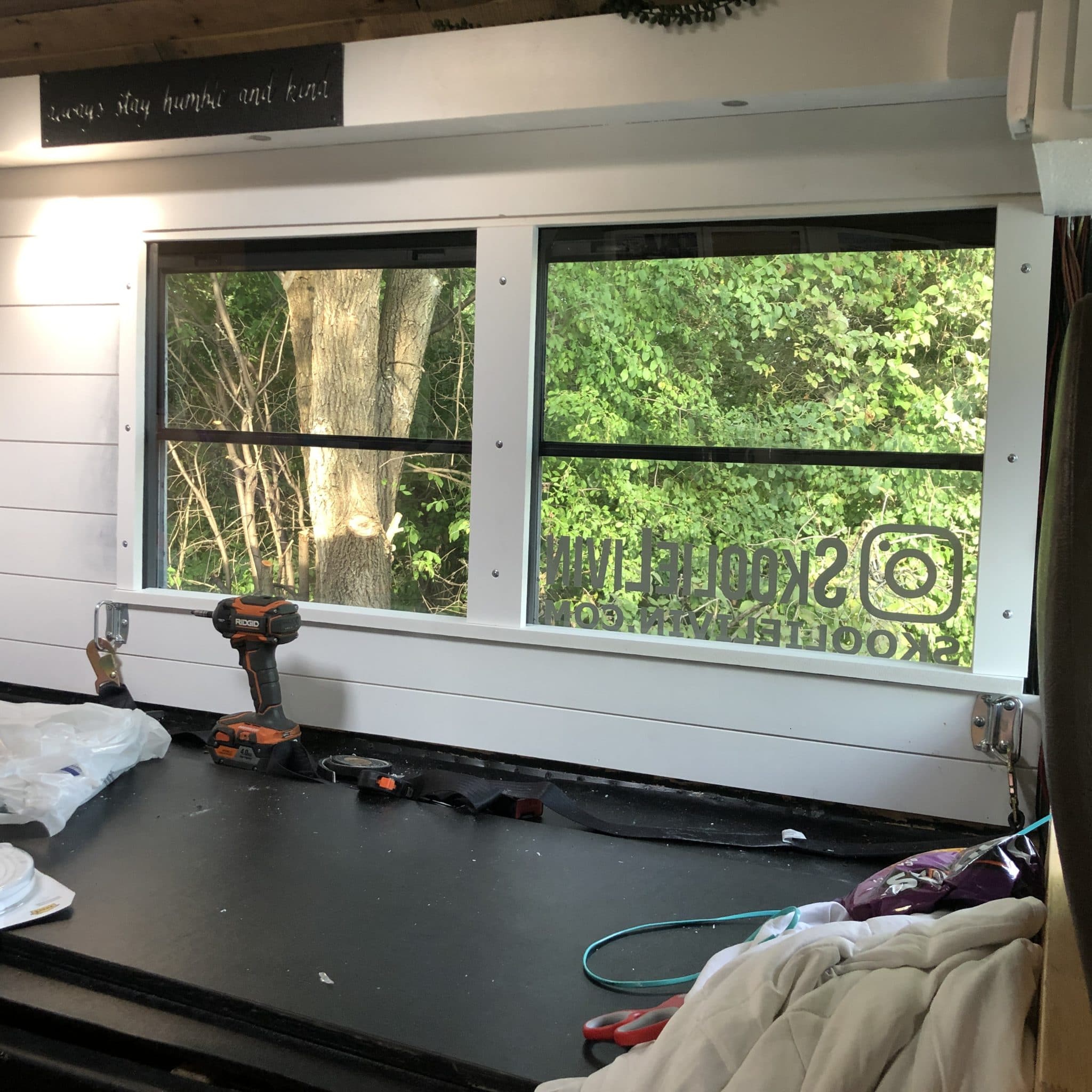
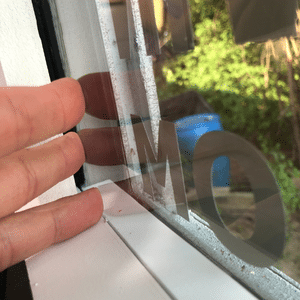
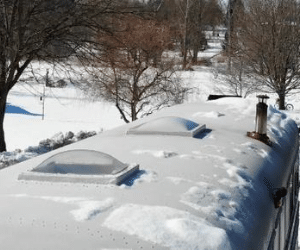
2 Comments